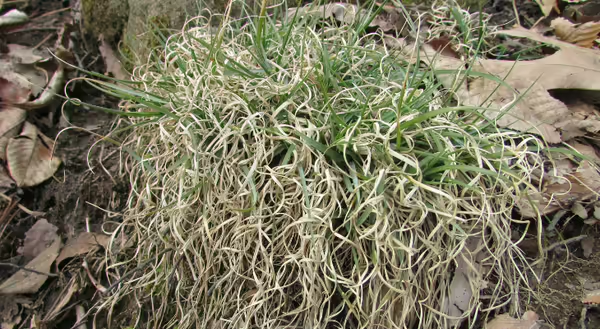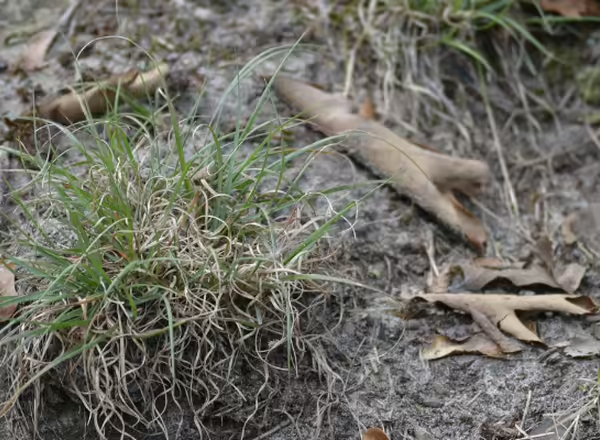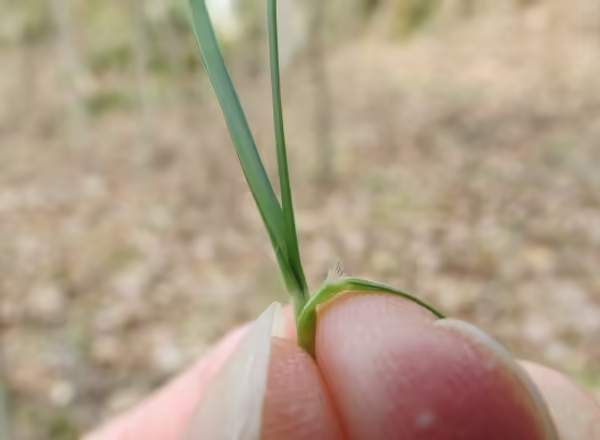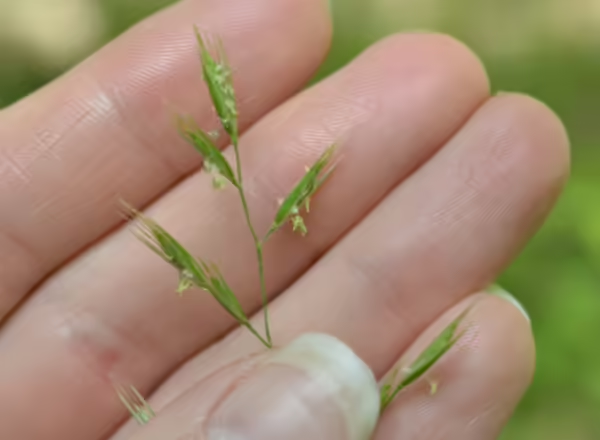
I love when plant identification is easy, when there’s one distinctive characteristic that makes a plant stand out from others around it, leaving no doubt what plant I’m looking at. It’s even better when that characteristic sticks around all year long, making the plant identifiable no matter the season. What a treat! A few plants that meet these criteria for me are Christmas Fern, with its evergreen boot-shaped leaflets and Bush Honeysuckle because of its striped bark. You might not think that a grass could meet these criteria but Poverty Oat Grass makes my list!

Poverty Oat Grass, Danthonia spicata, is a cool-season bunchgrass native to Illinois and found throughout the state. I used to only find it in higher quality bluff or glade habitats but I just found some growing along the edge of my lawn too. It does prefer to grow in sandy or rocky soil.
Look for curled, dried leaves
Poverty Oat Grass grows in bunches, which are often under a foot tall. The easiest identification characteristic is to look for tightly curled corkscrew shaped dead leaves gathered around the base of the bunch. These are found year-round, and they are the only characteristic I look for! If you take a closer look at the live, green leaves, they can be hairy or smooth, and you can find two tufts of hairs at the top of the leaf sheath.
When it flowers, this grass puts out a stem 1 to 2 feet tall, with a panicle inflorescence. There are only a few awned spikelets per branch and a small number of branches, so it’s easy to miss this grass in bloom.
While not the showiest grass, it can serve as a groundcover in rocky or sandy areas where other vegetation has a hard time growing.



Learn more
The Grasses at a Glance video series offers 1-2 minute identification videos.
Thank you for reading!
Never miss a new post! Subscribe to our email list to get updates each time a new post is available.
Give us feedback! How helpful was this information (click one): Very helpful | Somewhat helpful | Not very helpful
ABOUT THE AUTHOR: Erin Garrett is a Natural Resources, Environment, and Energy Educator for University of Illinois Extension serving Alexander, Johnson, Massac, Pulaski, and Union counties. Erin develops and delivers high impact programming to adults and youth to help them develop an appreciation for natural resources and to empower them to make small changes to positively impact the environment. Erin’s programming focuses on why homeowners should consider choosing native plants, how to support native pollinators, how to identify grasses, how to identify and manage invasive species, and developing an appreciation for prairie ecosystems.